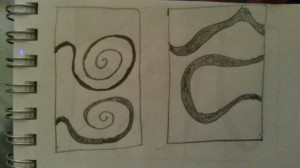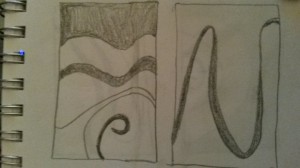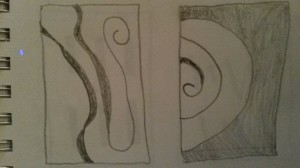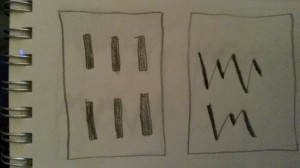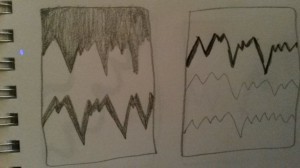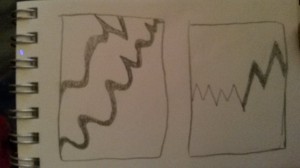Words can mean many things but a photograph tells so much more. The Boston Photographs by Nora Ephron is an article that talks about the tragic accident that killed a woman during 1975 and the attention it received after images of her dead body were published in an article of the Boston newspaper. It all began when Stanly Forman a photojournalist attempted to capture images that depicted Fire Fighters being brave however due to certain circumstances Forman ended capturing images of a 19 year old woman and her child falling, the woman died with her child surviving the fall. After publishing the images in the newspaper the question began to arise, “Is placing images of corpses ethical? Is it for sensationalism? or is it just a cheap and dirty way to gain attention to one’s work?” When discussing the matter ombudsmen, people who are in charge of moderating content on the behalf of the people say they have never seen anything like it while on the other hand editors of the post found it to be “intriguing” and found no problems with publishing it. The key point of the article is to debate the power of photojournalism over regular journalism to some extent photojournalism is more powerful than just regular journalism, photos can mean so much and the reaction it causes varies from person to person which makes it that much more valuable. In the end it doesn’t matter if an image is ethical or not as long as it fulfills its purpose of creating the reaction it desires it has accomplished what the photographer set out to do.
Tag Archives: summary
City Limits: Summary
First off I would like to say that this Reading is very interesting, because We are experiencing on what the author Colson Whitehead is trying to convey, he tries to explain to us that we are in a very productive city and nothing is going to change it. Everything is changing around us and especially around this time where technology is growing in an incredible rate. Something as small as a grocery store can make an impact on us through our memories just by being in it.Then years later we come back and its changed into a bank. Colson gives a lot of contradiction in his ” New York”. He does this deliberately to show us that we have our own New York and the way we look at things through our memories is New York but at the same time its not, in someone else’s eyes. A good quote to help explain my summary would be ” I’m here because I was born here and thus ruined for anywhere else, but I don’t know about you”. This is very firm and straight to the point.Peoples own New York never dies as long as we never forget it.
English Class Summary: 10/1
Today in class we started off by going back to what we did on Monday which was writing about what we saw in Saul Steinberg’s drawing of “The World as Seen From 9th Avenue”. With that we made interpretations based on what we see. One interpretation we made was that Steinberg is basically calling other states and cities boring places compared to New York. Especially New Jersey!
After we did the interpretations we went over project #2 again. Then we made an outline for project #2 for our drafts There were three different ways that we can all use as a guide for our project. The post is on this website. Each of them can result as several paragraphs. The different types of formats that we discussed were body, block format, and point by point. After that the class discussed the different places that everyone chose for their location for the project.
City Limits : Colson Whitehead
City Limits – Calson Whitehead
After reading Calson’s introduction to his book , “City Limits”, it opened my eyes to a different view of New York . He is right about the old New York and how it changed through time . Sometimes we don’t realize when we were younger what was around us and now it’s something’s different . His introduction describes about New York City and how it changed , what was in one location and now today is something else . We don’t sometimes have that chance to say goodbye to our old New York . What do I mean by “our old New York ? “. Like he said, someone’s New York could be different from mine , but it’s what was before then what is there now . Is our laundrymat that we had to put quarters inside , now they are inside buildings or you use a card . Or the carshop right across the street is now a Burger King . Through time we don’t see it much , and we can’t say goodbye . New things happen everyday to New York City and we don’t see it until one day we walk pass by through and remember what was there before it . With this , I found my New York , I go there all the time , and it started by just a picture I took . Through time it changed , but saying goodbye wasn’t an option .
City Limits summary
“City Limits” summary
In “City Limits” the author talks a lot about how everyone has their own personal New York. He talks about how someone who just got here and sees the met life building while he still remember it as the Pan-Am building. He then goes on to explain that both of them are both right and wrong. He’s lived here for years so his New York is different from someone just moved here.
Another theme is a feeling of loss after one of your favorite hangouts (haunts) is replaced by something new. He says that the change must have happened over and he’s right sometimes it feels that way. He also says that when that happens you wish you could go back and say goodbye to that restaurant or deli or pharmacy.
City Limits: Summary
“City Limits” by Colson Whitehead is a interesting article that tells readers about different views of New York and how everyone see’s it differently. In the article, Whitehead explains how New York life was for him, and how he see’s New York compared to everyone else. He begins by telling readers what he knows New York to be in his perspective, for example, in paragraph four, he explains his first time building his New York when he was looking out a subway window on the 1 train, describing the area as filthy, and to him, that’s how he will always portray that area, since that’s the way he saw it. He also shows this further on into the paragraph as he begins to describe the Met Life building next to the Grand central station as the Pan Am building since that’s the way he first saw it, compared to a woman that refers it as the Met Life building. Both contradict each other, saying that the other one is wrong and they are right, but in the end, it all depends on how the person first saw the building in their perspective.
Throughout the rest of the article, Whitehead exclaims that everyone’s new York will always be their own personal New York, but there will be times where people will begin to refigure their New York as time moves along, telling readers that you should try to accept the new compared to the old, not trying to judge it just because its different. But no matter what happens, the building you have grown to accept, will still be your own memory of what the building used to be to you in your own personal New York. It’s as if our own New York is like our own Utopia, a happy place that we can go back to remember and wish that we can relive again if given the chance. Its that sense of nostalgia that makes us sad at first, but happy to know that we once knew of such a place when we first saw it. For example, I remember when I was younger, the Nintendo world building in Rockefeller center in time square, wasn’t always Nintendo world, to me, I saw the Pokémon center. It was a building that was dedicated to such a big franchise that was, and still is successful to this day. now, instead of the building being dedicated to the one game, it has its own corner of glory on the top floor of the building, along with other Nintendo titles. However, the building still has the original doors from the old building, retaining its history and nostalgia for most people. To me, that building will always be the Pokémon center in my personal New York.
City Limits Reflection
In the reading of Colson Whitehead’s “City Limits” we learn a lot about our own view of New York. We’re all New Yorkers when we see a building or area of New York and we can remember what has been there before. Everyone has their New York. In the second paragraph he talks about that and how everyone starts to build their own New York once they make memories from what they see or remember. He also goes on about telling us not to believe what we hear or read on TV, newspapers, etc that’s about New York’s history. He says it doesn’t matter in what our New York is. While reading this you might even feel really nostalgic over some of the things that it makes you think. We may have seen a store change to several different things over the years. He also explains that we never really get to say goodbye to those places that we go to because we never know when it’s the last time we will be there.
Towards the last few paragraphs he talks more about as being a New Yorker, we can remember the past and see changes. But he also explains that no matter what New York will constantly be changing, with or without us. We can eventually see an entirely new city compared to what’s been there in the past. However, that will always be our New York.
Staccato and Legato Patterns
These thumbnails depict my Steccato and Legato translations of the music pieces we heard in class. The heaviness and flow of the lines represent different aspects of the song that stood out to me. The patterns depicted show the flow or rhythm of the music as it played. After refining it I was able to zoom in on more important parts in order to add more detail.
City limits Reflection
Colson Whitehead’s ” City Limits” opens our eyes to a new perspective concerning the “Old new york” and the ” Present new york”. He shows us that we each have our own version of how we see New York. He states ” You start building your private New York the first time you lay eyes on it” Colson is trying to convey that from the time you first experience New york in itself, is the moment you begin to remember it exactly how you first see it. However, as time passes, things slowly begin to change. Buildings may be replaced, new sky scrapers may be built, or even transportation changes. Despite this, you will never forget the way things were because that is what you originally experienced.
Throughout the text, Colson stresses that we don’t know when things are going to change around us. Therefore we never really get a chance to say goodbye to the many places we know so well and love. Anytime you go to the nearest pizza shop could be the last time you ever get to by from there. It really makes you realize that you should value certain things while they are still around. As I read the text, I thought of the well known line that states, “Nothing last forever”. Keeping in mind that New York is constantly changing and evolving, it is a weak chance that ones version of New york will always be reality.
Summary of the reading, “City Limits”
To think New York wasn’t the New York that’s infront of you. That’s strange to think about as you gaze at the Freedom tower. But the tower wasn’t always there. You just believe or imagine having your own New York to make you feel at “home”.
Colton whitehead, whom wrote the reading, “City Limits”, states that as the years go by, old New York is changing rapidly without everybody knowing or being herald. So it can’t ever come back. He still sees some buildings now as they were in the past. He even says that the people who own those old buildings didn’t even know that it was neglected and abandon,so, it was gone without saying goodbye. Even if we don’t see or know the Old or new New York, whithead states that the city knows everything about us. Basically, he says you can have your own New York but it’s wrong.
